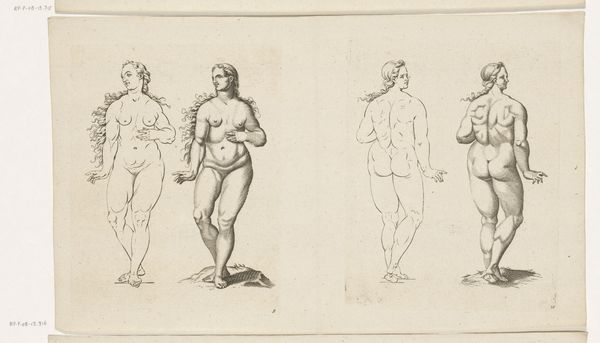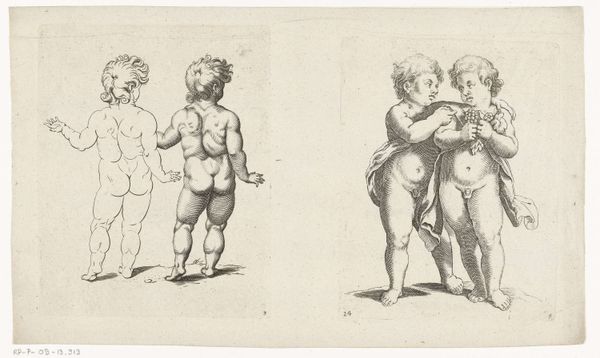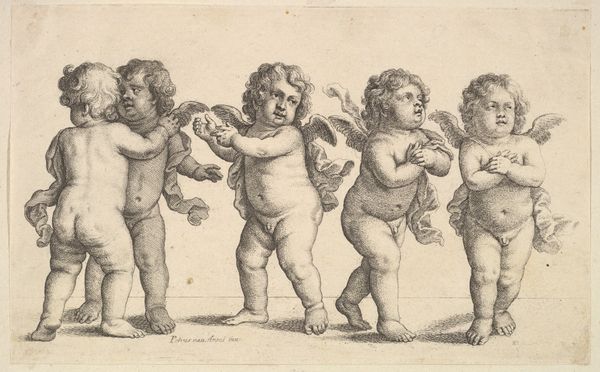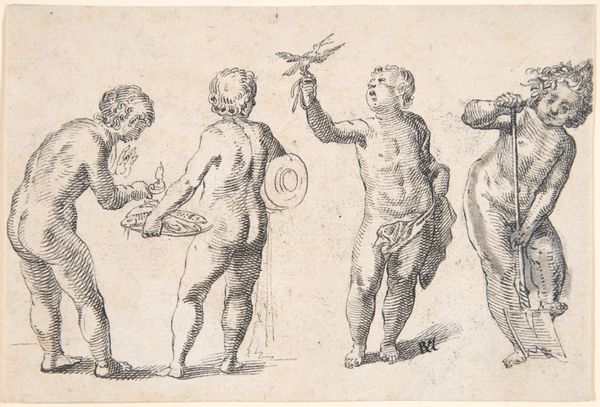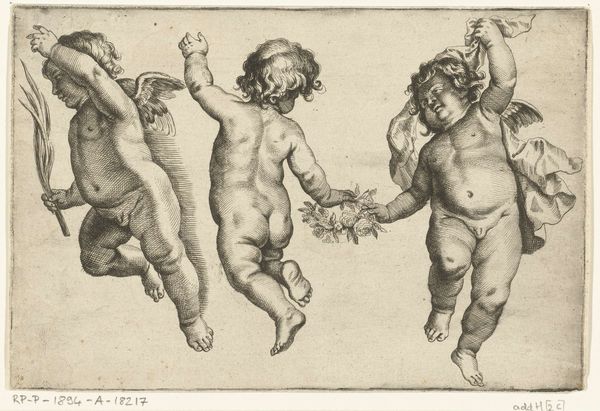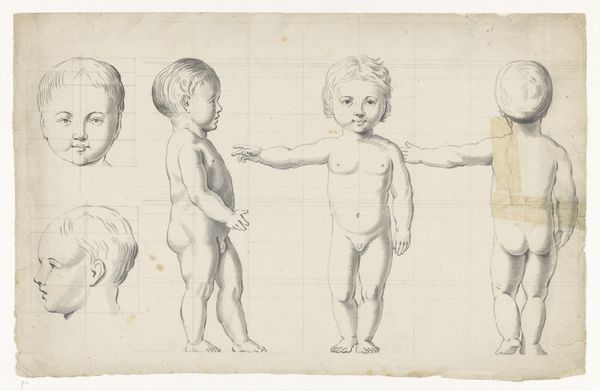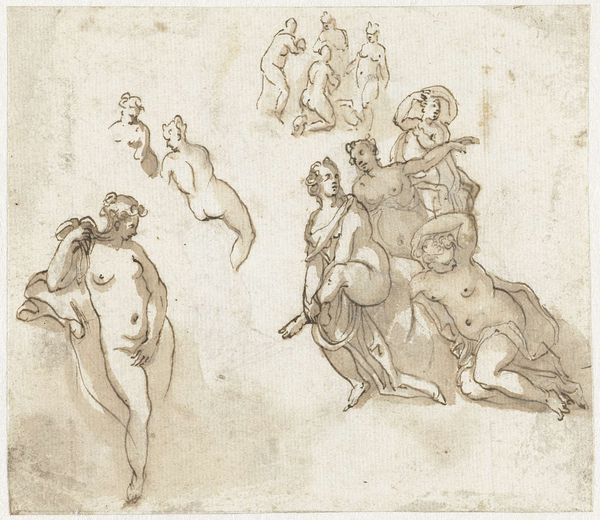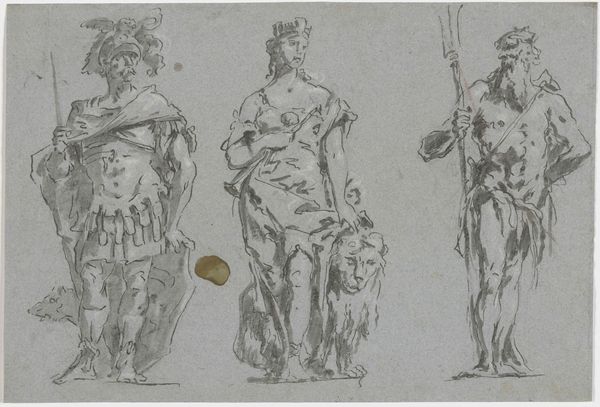
Four Studies after Giambologna's "Venus Leaving the Bath" 1590
0:00
0:00
drawing, print, pencil
#
drawing
# print
#
mannerism
#
figuration
#
coloured pencil
#
pencil
#
nude
Dimensions: sheet: 6 7/8 x 10 1/16 in. (17.5 x 25.5 cm)
Copyright: Public Domain
Curator: Let’s turn our attention now to this intriguing sheet of studies by Hans Bock the Younger, dating from around 1590. It's titled "Four Studies after Giambologna's 'Venus Leaving the Bath'," and you can find it in the Metropolitan Museum of Art's collection. Editor: My initial reaction? A curious choreography of classical echoes. There's something almost whimsical in seeing Venus duplicated and refracted like this. Are we glimpsing her at different moments, or different facets of the same ideal? Curator: Exactly. Bock was clearly captivated by Giambologna’s sculpture, and these drawings offer a fascinating look into artistic influence. Consider how the Renaissance and its classical themes were transmitted through workshops. The act of copying served not merely to replicate, but also to interpret and personalize the source material. Editor: And how different each interpretation feels. The shading, the slight variations in pose… each Venus has a unique weight and presence, like they're caught mid-thought. Almost like variations on a theme, revealing Bock’s style as much as echoing Giambologna's vision. It does reveal a lot about the artistic hierarchies and training practices in those days, wouldn’t you agree? Curator: Indeed. Bock’s drawing underscores a prevalent pedagogical method, especially within the Mannerist style: that the act of emulation was a legitimate creative endeavor. Moreover, note the emphasis on musculature, almost exaggerated; a feature one recognizes in Giambologna. It says quite a bit about ideals of the period. Editor: The exaggerated musculature certainly takes the edge off any overt eroticism; it’s about the celebration of form, but feels much like a visual exercise. Looking at her poses, there is an inherent sense of anticipation; of motion just begun. Perhaps this is less about beauty and more about the process of creation; both hers and the artists involved. It shows just how long lasting classical tropes can be, how enduring. Curator: That’s a beautiful reading of it. Bock, through his drawings, offers us access to a continuous chain of aesthetic influence, constantly being revised and refreshed. Editor: Precisely, it really does add another layer to the old question "what is art?" and invites one to think that art itself is something of a cultural exchange of ideas.
Comments
No comments
Be the first to comment and join the conversation on the ultimate creative platform.
